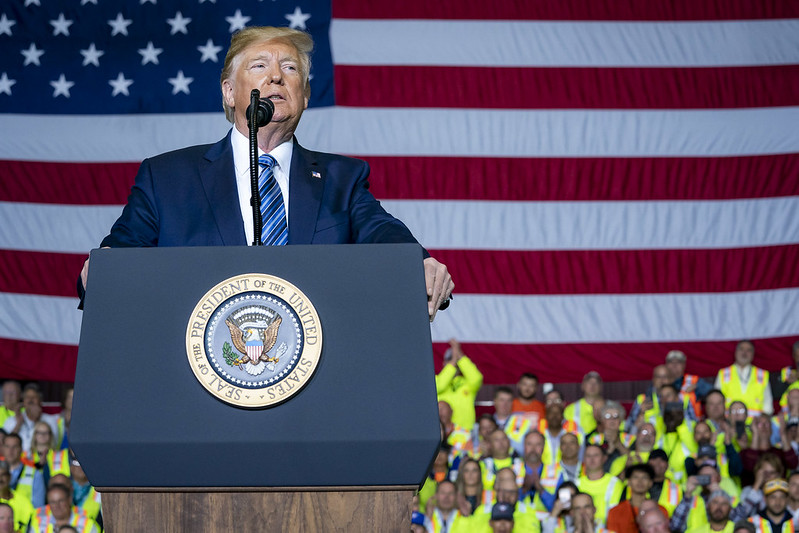
You saw during the pre-Covid era in the first Trump administration what kind of economic power the Tax Cuts and Jobs Act (aka, the Trump Tax Cuts) had on the economy. Before the introduction of the China virus, the economy was banging on all cylinders, and unemployment was extremely low. In The Wall Street Journal, two titans of economic thinking, Steve Forbes and Stephen Moore, explain that the Trump Tax Cuts were great but that a flat tax would be even better. They write:
Making the Tax Cuts and Jobs Act permanent would be a good start for Congress in 2025. But it’s time to take an even bigger step: creating a simplified flat tax for all. The TCJA got us close to this goal, and a few additional reforms would get it done.
Collapsing the personal-income and corporate tax rates to 15% would have huge economic benefits. America would suddenly have one of the lowest tax rates in the world, resulting in trillions of dollars of new capital flow and a spike in take-home pay.
The simplicity of a flat tax would reduce the deadweight costs associated with tax compliance—and the headaches. The White House Office of Information and Regulatory Affairs calculates that Americans spent almost eight billion hours filling out tax forms in 2024. The Tax Foundation estimates that this cost the economy $413 billion in lost productivity, and the Internal Revenue Service estimates that we spent $133 billion on out-of-pocket compliance costs. That adds up to a burden of $546 billion.
Donald Trump’s 2017 reforms already simplified tax filing by doubling the standard deduction from $12,500 to $25,000 for married couples filing jointly. Prior to 2017, almost 40% of tax filers itemized deductions on their tax returns. Today, only 9% do. Almost all low- and middle-income tax filers now check the box for the standard deduction.
Getting rid of what remains of these itemized deductions and special credits—except for those dedicated to supporting families with children and dependents, a worthy investment—would unleash the economy.
Consider the mortgage interest deduction. Most homeowners don’t take it anymore, and those who do are effectively subsidized by lower-income taxpayers who don’t have a large mortgage. Any revenue losses resulting from this deduction’s elimination would be easily offset by the higher incomes created by the new flat tax rate. This would also help housing affordability: When people are earning and saving more they have more cash to spend on homes.
Then there is the state and local tax deduction, or SALT, which effectively allows higher-income Americans to deduct more than lower-income taxpayers. The TCJA capped this deduction at $10,000. The Tax Foundation calculates that eliminating this deduction would raise $2 trillion over 10 years. Almost all of that revenue would come from the wealthiest Americans, who would still come out ahead thanks to the lowered tax rate.
Some Republicans have recently proposed raising the SALT cap. But why should lower-income Americans be subsidizing the wealthy’s local taxes at all? The deduction encourages states and cities to raise their taxes, which chases out businesses and workers.
We can even safely eliminate the deduction for charitable contributions. When Americans have more take-home pay, they give more. They don’t need a deduction to encourage them to do so. In the 1980s, charities feared that donations would decline when the top income-tax rate went from 70% to 28%. Instead, giving reached record levels.
Mr. Trump has already proposed a flat 15% corporate tax rate. There are plenty of wasteful business deductions we can get rid of to help pay for the lower rate. We should start with green-energy subsidies, which are smashing Germany’s once-mighty industrial machine by sending energy costs sky-high. The corporate SALT deduction can disappear too. It’s unfair: Why should Walmart get to deduct its local taxes while a local hardware store can’t?
Under the flat tax, companies would need only to deduct the normal costs of doing business, such as those resulting from labor and raw-material sourcing. The beauty here is that capital spending could be expensed—no more worrying about depreciation schedules.
Interest groups such as the housing lobby and officials from high-tax states say middle-income Americans benefit from itemized deductions. But almost all the revenue loss to the Treasury comes from the tax returns of millionaires and billionaires. In other words, the most regressive feature of our tax code is the availability of special deductions and loopholes. When no one is getting any special-interest breaks, a progressive tax rate won’t be needed to make sure the super-rich pay their “fair share.” The low rate will so supercharge the economy it’s likely the rich will end up paying more—as typically happens when rates have been cut, including in 2017.
Mr. Trump has a rare window of opportunity to transform America’s economy into a fast-growing colossus by enacting a simplified flat tax. And we can’t think of a better way to drain the swamp of special-interest lobbyists, IRS agents and tax lawyers.
Action Line: Your Survival Guy likes the simplicity of a flat tax, one with which you can use the back of a napkin to calculate what you owe at the end of the year. You shouldn’t need fancy software or an accountant. Click here to subscribe to my free monthly Survive & Thrive letter. Email me at ejsmith@yoursurvivalguy.com.
Originally posted on Your Survival Guy.



